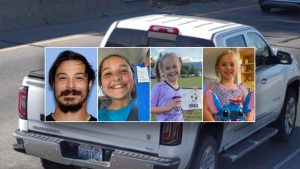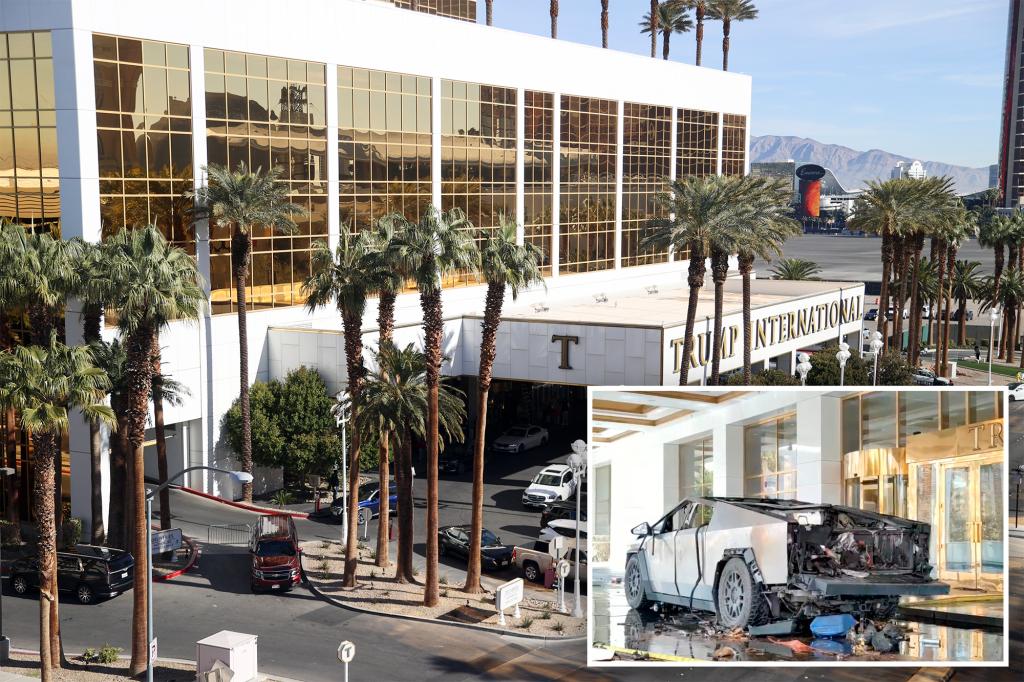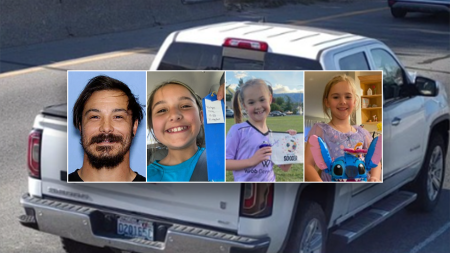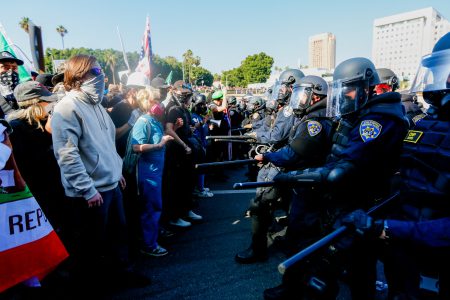The detonation of a Tesla Cybertruck laden with explosives outside the Trump International Hotel in Las Vegas on Wednesday, January 3rd, sent shockwaves through the luxury establishment and the city, disrupting the New Year’s festivities for many tourists. The incident, orchestrated by active-duty Army member Matthew Livelsberger, who subsequently took his own life, sparked chaos and confusion within the 64-story tower as guests scrambled to evacuate. While the physical damage to the hotel was minimal, the emotional impact on guests and the disruption to their stays were significant.
Numerous guests recounted their experiences navigating the evacuation process. Australian tourist Linda Murray, accompanied by her children and seven grandchildren, described the frantic rush to leave their rooms near the top of the hotel after a knock on the door alerted them to the explosion. With elevators disabled, they faced the daunting task of descending 55 flights of stairs. Similarly, Lauren Straub and Elad Levy, who were preparing to check out of the hotel, found themselves walking down 29 flights of stairs after being informed of the incident by a hotel employee. The evacuation led to guests being directed to a nearby lot where authorities collected their personal information, including names and birthdates, before allowing them to leave. This added another layer of complexity to an already stressful situation, particularly for those who did not have their passports readily available.
The communication between the hotel staff and guests following the explosion was described by some as inconsistent. Cindy Banuelos, a guest from California, recounted spending the entire day confined to her room with limited communication from the hotel, relying on leftover New Year’s Eve food for sustenance. The disruption extended to services like valet parking, which remained unavailable for an extended period. While acknowledging the generally high quality of the accommodations, Banuelos expressed surprise at the incident and the subsequent handling of the situation. These accounts illustrate the varied experiences of guests and the challenges posed by the sudden emergency.
Despite the unsettling events of the previous day, the Trump International Hotel appeared to be returning to normalcy less than 36 hours later. Guests were observed coming and going, and even a Cybertruck was parked in the same driveway where the explosion had occurred. An employee who had been off duty during the incident but returned later that day and then again the following day, despite having originally been scheduled off, emphasized his commitment to the hotel, referring to it as “his home.” This highlights the resilience and dedication of the hotel staff in the face of adversity.
While some guests were directly involved in the evacuation, others were less aware of the immediate aftermath. Seventeen-year-old Sebastian Garcia slept through the entire incident, while his mother, Monica Acosta, was awakened by the tremors but initially mistook the commotion for fireworks. This underscores the localized nature of the explosion’s impact within the large hotel, with some guests experiencing the full force of the evacuation while others remained relatively undisturbed.
Further investigation revealed the extent of Livelsberger’s preparations. Clark County Sheriff Kevin McMahill confirmed that Livelsberger had packed fireworks inside the Cybertruck, but the vehicle’s robust construction largely contained the explosion, limiting the damage to the hotel and resulting in only minor injuries to seven individuals. This information sheds light on the potential for greater destruction and underscores the fortunate outcome given the circumstances. The incident, while alarming, ultimately served as a testament to the structural integrity of the Cybertruck and the relatively contained nature of the explosion.










